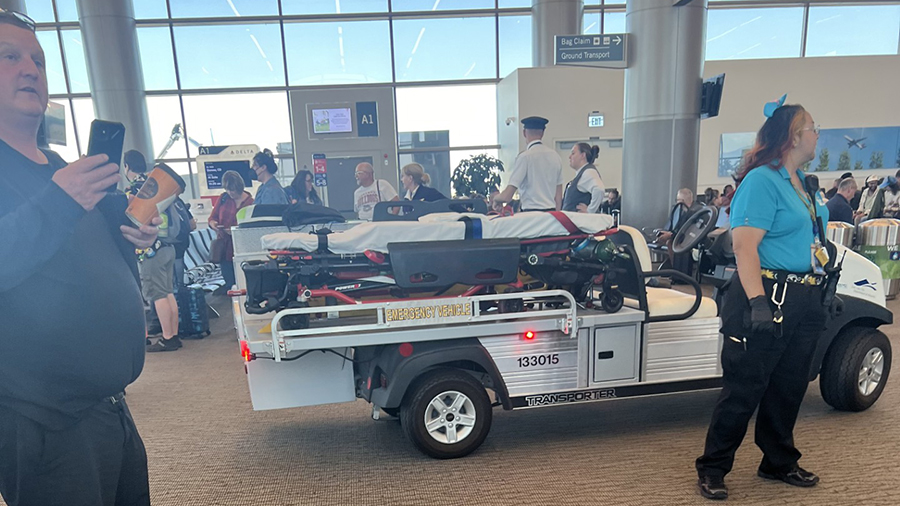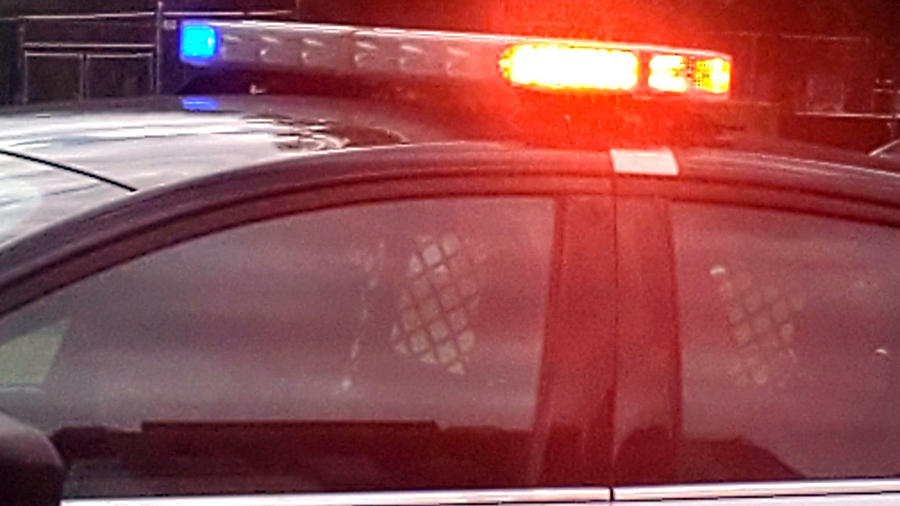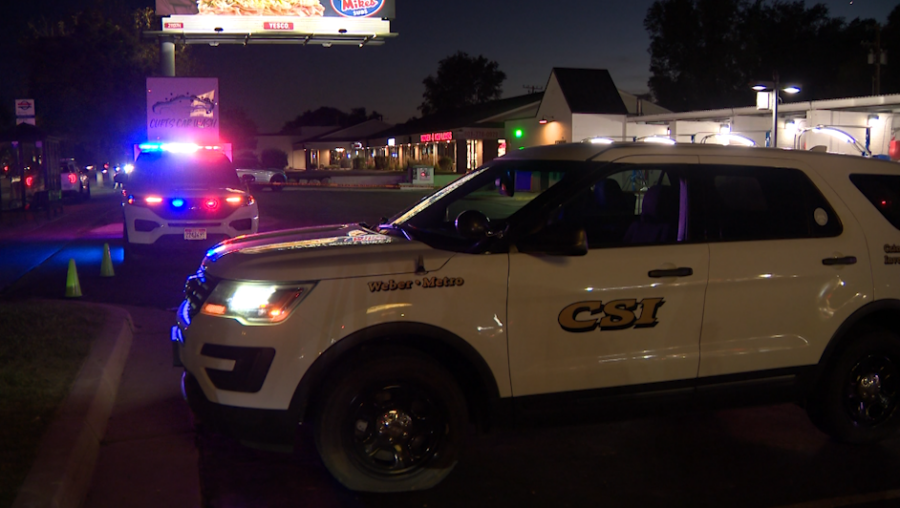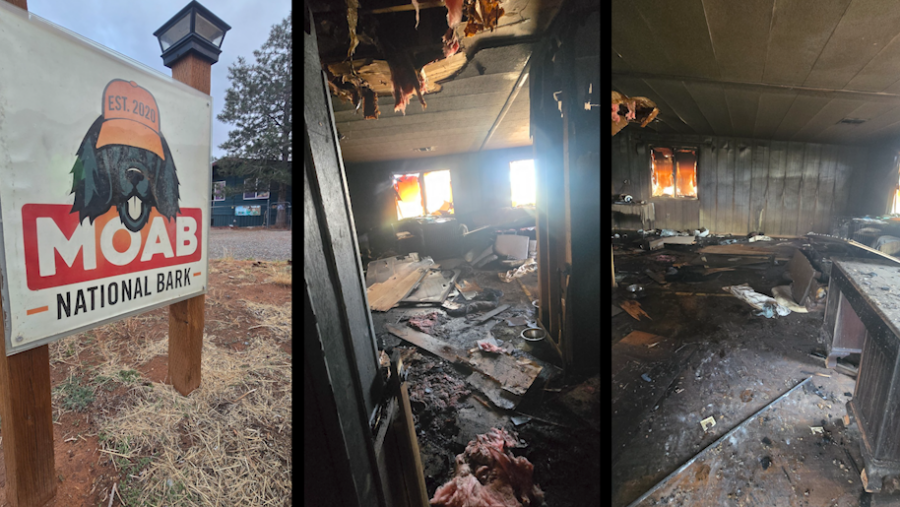Passengers describe injuries from Delta flight with cabin pressure issues
Sep 16, 2024, 6:14 PM | Updated: Sep 17, 2024, 9:24 am
SALT LAKE CITY — Two Delta Air Lines passengers say they are still recovering from a pressurization issue on a plane that caused bloody noses and busted eardrums.
Caryn Allen said it didn’t take very long for other passengers to notice something was wrong with Delta Air Lines Flight 1203, which was flying from Salt Lake City to Portland.
“I looked over at my husband, and he had both of his hands over his ears, you know, kind of leaning forward,” Allen said.
She said they quickly realized they weren’t the only ones in pain on the flight.
“I looked about a row behind me, over on the other side of the aisle, and there was a gentleman that clearly had a very bad bloody nose, and people were trying to help him,” Allen said.
Another passenger, Jaci Purser, said it felt like somebody was stabbing her in the ear. She felt her ear pop from the pressure in the cabin, then bubble.
“I grabbed my ear, and I pulled my hand back, and there was blood on it,” Purser said.
Passengers told KSL TV they felt the plane dip and looked out their windows to see them circling the Great Salt Lake.
“They finally announced that we were going to head back to the airport and still didn’t say why,” Allen said.
In a written statement, Delta Air Lines said the Boeing 737-900 aircraft had pressurization issues, but did not go into detail on what caused the problem.
“It’s an automatic thing the airplane does, and we monitor it to see if it’s not doing what it should be doing,” said Valerie Walker, a retired Delta Air Lines pilot.
Walker said she had experienced a similar pressurization issue while flying.
“We take the airplane down to 10,000 feet nice and slowly or whatever altitude it will maintain a cabin pressure below 10,000 feet or at 10,000 feet,” she said.
Walker said the pilots will try to troubleshoot the problem while in the air to avoid returning to the airport or making a detour. She said flying at lower altitudes burns more fuel.
“I suspect they saw the cabin pressurization problem and heard it, asked air traffic control to go out over the Great Salt Lake because it was visual where they had time, and they had safe clearance to go through our emergency procedures and try to find out what was wrong,” Walker said.
Eventually, it was decided that Flight 1203 should return to the Salt Lake International Airport.
Walker said the issue is typically not caused by pilot error.

Paramedics outside of the Delta Air Lines gate, helping passengers that were hurt in the air pressurization problem on Sept. 16, 2024. (Courtesy Caryn Allen)
“It’s usually something called the outflow valve that monitors the pressure in the aircraft or, it could be a sensor that went wrong and is telling the outflow valve to do the wrong thing,” she said.
She said, since this flight returned to the airport, it’s likely the pilot couldn’t find a way to re-pressurize the plane.
“Airplanes only make money when they’re in the air,” Walker said. “Plus, we have people that have to go somewhere. They have to make connections. If it’s safe, and we can fix it in the air, we’ll do it. If there’s any doubt that it poses a safety problem, then no, we go to the nearest airport where we can get it fixed and land.”
The plane landed at 8:30 a.m., where paramedics were waiting for the injured. Delta Air Lines told KSL TV 10 people were evaluated or treated by paramedics.
Purser said the airline paid for a Lyft ride to the hospital.
“They said, if you’re bleeding, we would recommend you go to the hospital,” Purser said.
Purser was diagnosed with a ruptured eardrum. She said paramedics gave her antibiotic drops to prevent infection, steroids, decongestants, and nose spray.
“It sounds like I’m underwater when I talk,” Purser said. “My hearing is so bad right now.”
Allen said the whole incident confused many passengers, including herself.
“They were very attentive and trying to make sure everybody was okay once we were on the ground,” Allen said. “I do feel they could have done a little bit better, letting us know what was happening.”
Walker said while pressurization issues are considered abnormal, they aren’t typically classified as emergencies. She said there are ways to cope if passengers find themselves on a flight with cabin pressure problems.
“You can chew gum, [hold] your nose and blowing out, but not blowing air pressure out, and you’ll hear it, feel your ears click. And if you have a baby, try to feed them or something where they’re swallowing,” she said.
In a new statement, Delta Air Lines said its technicians worked on the pressurization issue, which has been fixed. The aircraft was put back into service on Monday.
We sincerely apologize to our customers for their experience on flight 1203 on Sept. 15. The flight crew followed procedures to return to SLC where our teams on the ground supported our customers with their immediate needs.
Medical personnel met the flight at the gate and identified 10 individuals as needing evaluation or treatment.
Delta offered to cover transportation for these customers to medical facilities.
Delta technicians worked the pressurization issue on the aircraft successfully. It was taken out of service on the morning of Sept. 15 and went back into service on Sept. 16.
– Delta Air Lines
The FAA said it will investigate what happened on Flight 1203.















